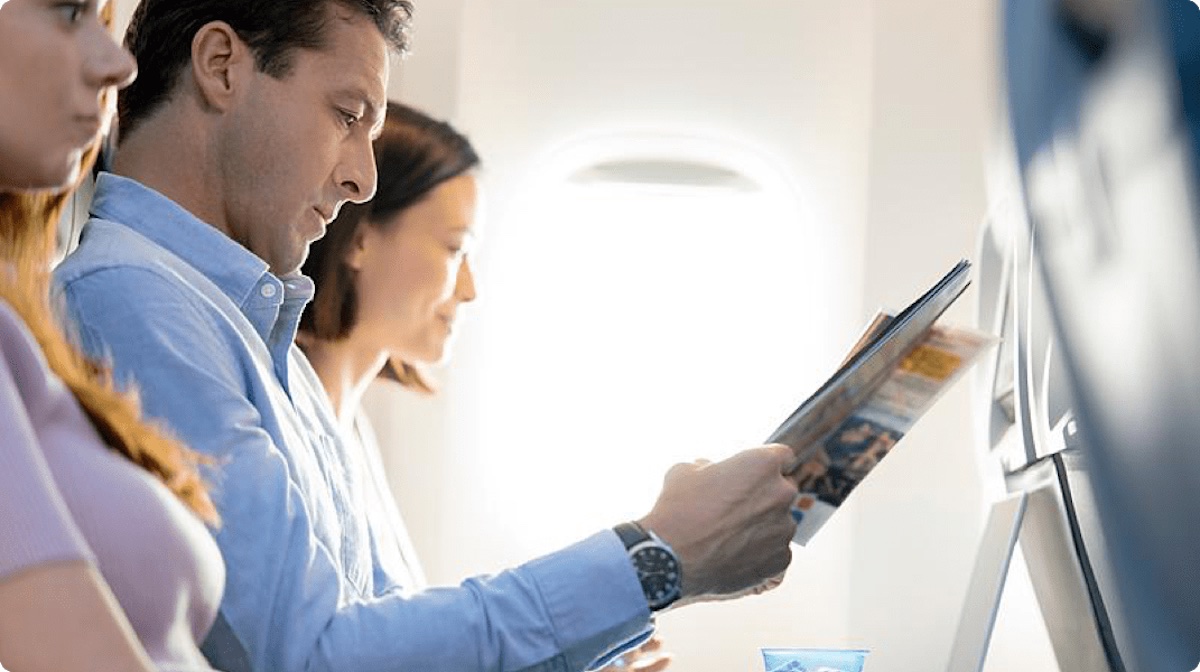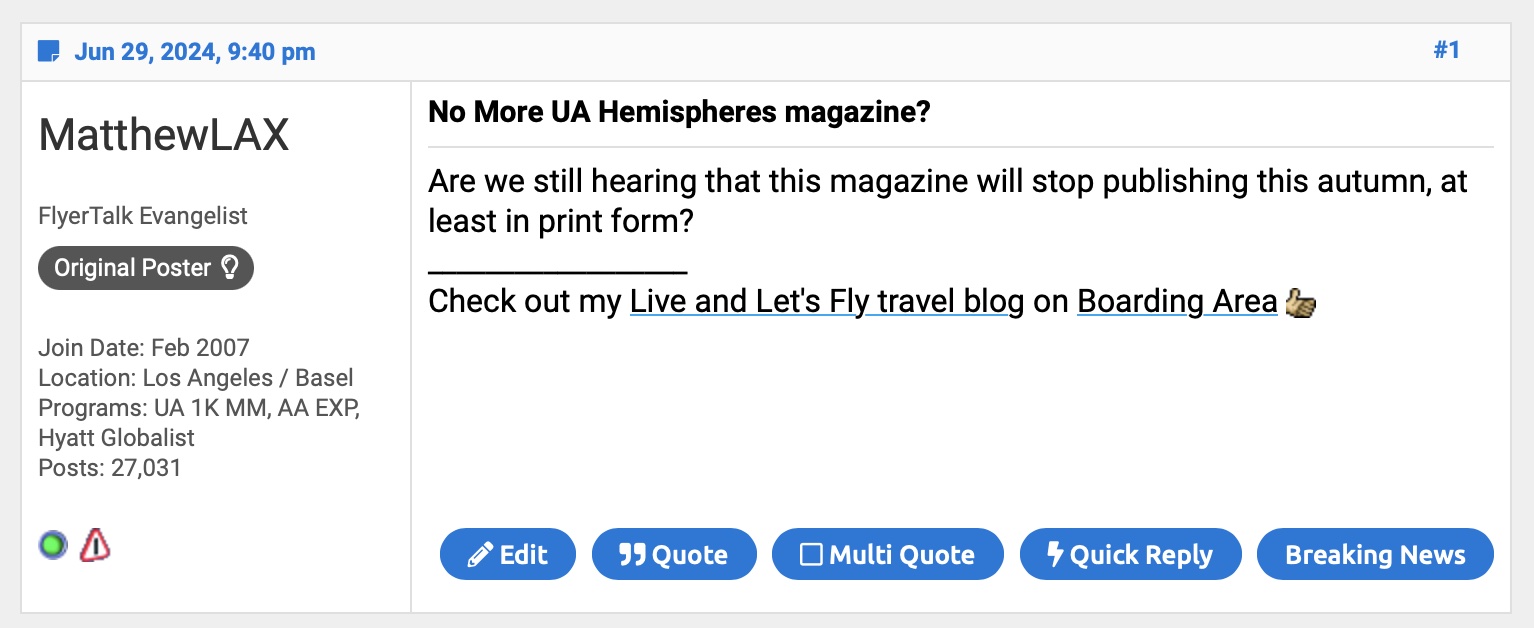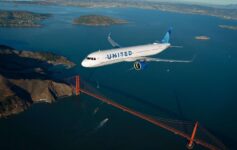
United Airlines will stop printing its perennial Hemispheres Magazine after September, but the in-flight magazine will live on in digital form.
United Airlines Confirms Hemispheres Magazine Will Continue In Digital Form
I’ve been hearing rumors about the demise of Hemispheres since late June:

United has now confirmed that next month, September 2024, will mark the final print edition of the magazine. United is the last US legacy carrier to print its in-flight magazine, with American Airlines and Delta Air Lines having long abandoned their own.
In a memo reviewed by Live And Let’s Fly, Unites explains why it is digitizing:
A digital Hemispheres allows us to make the magazine even better — we can reach a wider audience across all of United’s channels, throughout their journey, rather than only on board and offer more personalized content and tell richer stories. We will be able to create content that is more personalized, relevant and accessible, letting travelers learn about the destinations they are flying to and enabling them to take content with them — no matter where they are in the world to enhance their trips. We will also be able to better meet the accessibility needs of our customers with enhanced digital functionality coming soon like screen reading, enlarged text and translations into eight languages.
In short: multiple languages, enlarged text, custom-tailored content based on the destination. But it seems the deeper reason is linked to Kinective Media, United’s new multimedia company.
Moving to a digital version of Hemispheres opens more Kinective Media by United Airlines opportunities and provides a more measurable experience.
Regular features like “Three Perfect Days” guides will continue and even expand to video form. Plus, passengers can now access the current and historic issues of Hemispheres for free using the onboard wi-fi network:
United.com/hemispheres will be whitelisted for inflight usage. And in the future, customers will be able to find Hemispheres on board in a new way: the screen at their seat. Their favorite stories from Hemispheres will be accessible through our inflight entertainment system in exciting new formats.
In addition to the seatback safety cards, new menus will be printed listing drink choices as well as the items available for purchase onboard and a guide to in-flight wi-fi, streaming entertainment, and seatback screens, when relevant. United predicts the removal of the magazine will reduce CO2 emissions by 13,000 metric tons.
Operationally, removing the physical issue of Hemispheres magazine will reduce workload, CO2 emissions and cost. There will also be substantial savings in print cost, distribution and fuel that this transition to digital provides. Routine security checks of aircraft during daily first flights and international turns represent approximately 97% of the cabin cleaning labor utilized for Hemispheres. In 2023, the physical magazines produced approximately 13,000 metric tons of scope 1 CO2 emissions, which are defined as emission sources that an organization owns or controls.
One thing that I will forever fondly remember is when United sent out physical copies of Hemispheres Magazine to its elite frequent flyers in August 2020, right in the bowels of the pandemic. That was such a nice way to say, “Hello. We’re still here!”
CONCLUSION
United Airlines will stop printing its perennial Hemispheres Magazine after September, but the in-flight magazine will live on in digital form, with the magazine available online here and eventually on seatback screens on your next United flight.
Now how will I know where to go for teeth whitening or cosmetic surgery in Houston? [inside joke]
image: United Airlines




Anything digital necessitates purchasing a dumb device . A book on a tablet is not a real book .
A real drink comes in a glass . A real Jeep is never a tesla . A real girlfriend comes with problems .
LOL!! This is amazing and accurate.
Seriously, why bother? Most don’t read it anyway.
Magazines have not had clever advertisements since The New Yorkers of the 1960s . The Volkswagen advertisement campaigns were clever : eg . Volkswagen owners increase the apparent size of their homes , and they are less ridiculous when they fit into a small parking space ..
No interest in digital magazines. They’ve lost me. I read real books, not books on a device, and I read the New yorker in print, not on a device. They’ve lost me and this is disappointing.
There is JOY in boarding the plane and seeing a magazine and on airlines at least, looking at the printed route map and seeing all the places they go. digital formats lose me. No thanks.
Before I retired, I flew 3 or 4 flights weekly, and I was always happy when the first of the month rolled around as the new inflight magazines arrived. Yeah, there were some needless dental and dating ads, but the route maps always had me dreaming of new places to roam, a number of puzzles to work out as I circled EWR, PHL, BOS and SFO to name just a few locations, as well as some darned good photography of different locations around the world that frequently had me checking out the route maps to figure out how to get there. I have many issues from AA, UA, BA, DL, CO, QF and CX in my library that I still get a kick out of viewing every now and then. Thanks for keeping this alive UA
Alive not for much longer.
I will miss Hemispheres in print format. I enjoy in-flight magazines from all airlines and occasionally save a few I find interesting. I still remember the days when you would find airline postcards in the seat-back pocket. With print format I have more control of the information being fed into my brain.
Nostalgia is so powerful. And for most of us who spent decades on planes these magazines remind us of a different time. That’s ok. As is the change. Without nostalgia we are stuck and without changes we could never heartily reminisce.
I hope Phaidon or the like does a hard bound book compilation of the best of Three Days In…. It’s for many of us the hallmark of many late nights reading the beloved section while on a plane from Des Moines in February and pondering the best of Bangkok.
Thanks to all the writers and contributors over the years. It wasn’t The New Yorker, sure, but did a fine job appealing to everyone in an intelligent and broad manner.
Don’t forget Seat 23A/B!
I have fond memories of altering photos of the former CEO Jeff Smisek. A two tipped sharpie pen allowed me to transform him into a vampire or a zombie.
I turned the S in Smisek into a $.
Priority boarding allowed me to do 3-6 magazines!
In recent times, my editorial skills went into play on UA’s stories of Corporate Wokeism and DEI.
It was also fun adding content to Chase card ads and the Buy on Board menu.
I guess I could digitally sign my copy
I’m surprised it took this long. It’s costly to print, doing so can be seen as not environmentally friendly, and maybe 15 kg of extra weight in a Max9.
Klint -do you have the link?
I never miss badly produced inflight magazines, but I sure do miss well-produced ones. I don’t like being forced into digital, especially since the personalisation of the ads that digital entertainment network will serve are almost always from information I’d rather them not harvest from my online activity. I also miss print magazines in general… Digital can reproduce the information, but it can never replicate the tactile experience of touching and seeing things in that kind of way. Same with books. They’re *real* and immediate and 3-dimensional in ways that digital screens and AI-generated crap will never be. But here we are.